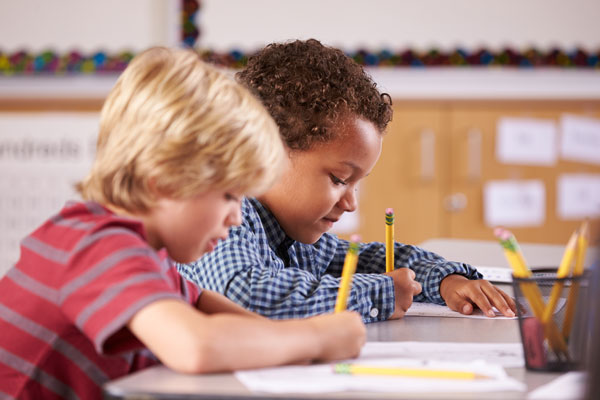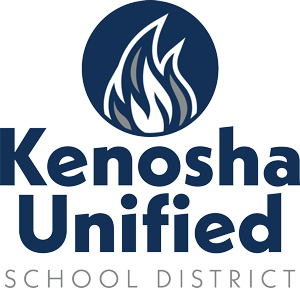First Grade Academics

English Language Arts
Standards
- Wisconsin English Language Arts Standards (Revised 2020)
Resources
First Grade Units
| Quarter 1 | Quarter 2 | Quarter 3 | Quarter 4 | |
|---|---|---|---|---|
| Reading | Building Good Reading Habits | Learning About the World Reading Nonfiction | Readers Have Big Jobs to Do: Fluency, Phonics, and Comprehension | Meeting Characters and Learning Lessons: A Study of Story Elements |
| Writing | Personal Narrative | Writing Information/How Tos | Writing: Opinion/Reviews | Realistic Fiction |
| Phonics | Talking and Thinking About Letters | The Mystery of
the Silent E |
Reading Across Words Using Vowel Teams to Build Big Words | Learning Through Wise Mistakes |
Parent Resources for ELA
- RAZ Information for Families
Your child has access to an award winning literacy resource. Click on this link to learn more about Raz Plus from Learning A-Z! - Act 20 Resources & Family Activities
Math
Standards
- Wisconsin Math Standards (revised 2020)
Resources
First Grade Units
| Quarter 1 | Quarter 2 | Quarter 3 | Quarter 4 |
|---|---|---|---|
| Unit 1: Numbers All Around Us | Unit 3: Adding, Subtracting, Counting & Comparing | Unit 5: Geometry | Unit 7: One Hundred & Beyond |
| Unit 2: Developing Strategies with Dice & Dominoes | Unit 4: Leapfrogs on the Number Line (Parent Letter: English, Spanish) | Unit 6: Figure the Facts with Penguins | Unit 8: Changes, Changes |
| Please contact your child’s teacher for more information on specific learning targets, other resources used, or other ways to help your child learn. | |||
Parent Resources
- Math at Home – collection of activities, organized by mathematical content, uses familiar routines that can be used by students and families.
- Math Apps – free apps that are based on the visual models student use in Bridges in Mathematics
Social Studies
Standards
Wisconsin Social Studies Standards
Resources
First Grade Units
| Quarter 1 | Quarter 2 | Quarter 3 | Quarter 4 |
| My School, My Community | Work in the Community | Looking at Our World | Our Past, Our Present |
| Please contact your child’s teacher for more information on specific learning targets, other resources used, or other ways to help your child learn. | |||
Science
Standards
First Grade Units
| Quarter 1 | Quarter 2 | Quarter 3 | Quarter 4 |
| Animal and Plant Defenses: Spikes, Shells and Camouflage | Light and Sound: Puppet Theater Engineers | Spinning Earth: Investigating Patterns in the Sky | |
| Please contact your child’s teacher for more information on specific learning targets, other resources used, or other ways to help your child learn. | |||
Social Emotional Learning
Social-Emotional Learning (SEL) helps children develop the skills they need to succeed in school and in life. These include:
- Understanding and managing emotions
- Making responsible decisions
- Showing empathy and kindness
- Building positive friendships
- Solving problems in peaceful ways
SEL supports the whole child—academically, socially, and emotionally—helping students feel safe, confident, and ready to learn.
Elementary school is a time when children are learning how to navigate the world around them. As they grow, they begin to understand themselves, others, and how to work together. SEL helps students:
- Develop self-confidence and independence
- Learn how to handle big emotions
- Build friendships and resolve conflicts
- Follow directions and stay focused in class
- Create a strong sense of belonging at school
When students feel supported socially and emotionally, they are more engaged in learning and better prepared for future academic success.
KUSD uses the Second Step Elementary program, a trusted, research-based curriculum that teaches SEL skills in a developmentally appropriate and engaging way. Second Step lessons are taught in the elementary classroom and focus on:
- Skills for Learning – Listening, focusing attention, and being assertive
- Empathy – Understanding and caring about others’ feelings
- Emotion Management – Recognizing strong emotions and calming down
- Problem-Solving – Using step-by-step strategies to make good choices
Lessons include stories, songs, discussions, games, and role-playing to help students practice their skills in fun and meaningful ways.
Music
All K-5 students in the Kenosha Unified School District participate in general music for 45 minutes per week.
First Grade Learning Objectives for Music
Students will experience and interact with the following:
Emerging Rhythm Skills
- Pulse
- Long/Short Patterns
Emerging Melodic Skills
- High/Low/Same
- Create vocal glissandi
Developing Vocal Skills
- Echo simple melodic patterns using their head voice
- Sing simple songs in their head voice
- Perform simple chants
- Spontaneously perform an original melody/tune using two or more notes
Developing Instrumental Skills
- Perform the pulse on classroom instruments
- Use proper playing technique on classroom instruments
Grade Level Musical Elements
- Four voices
- Singing
- Speaking
- Whisper
- Shout
- Loud and soft
- Slow and fast tempo
- Long and short sounds
Developing Interaction with Music
- Imitate creative movement with or without music
- Identify the expressive intent of music
Art
All K-5 students in the Kenosha Unified School District participate in art for 45 minutes per week.
First Grade Learning Objectives for Visual Art
Elements and Principles of Art
- Space
- Explains the purpose of a horizon line.
- Color
- Recognizes and identifies the secondary colors.
- Texture
- Identifies real and implied textures.
- Variety
- Uses many shapes, colors and textures.
Artistic Process
- Experiments with materials to design artwork on purpose (including 2D and 3D artwork).
- Uses art vocabulary correctly to explain creative ideas.
Craftsmanship
- Observes, investigates, classifies and determines how to make art and make revisions for improvement.
Responding
- Names who work in art museums and galleries and describe what they do.
- Explains various imaginative artworks and how it makes them feel and why.
Connecting
- Asks and answers questions about artwork to be put on display for others to see.
Contact Information
Mary Hoover
Coordinator of Elementary ELA & Social Studies
mhoover@kusd.edu
262-359-6311
Stacy Cortez
Coordinator of Elementary Math and Science
scortez@kusd.edu
262-359-7544
Scott Plank
Coordinator of Fine Arts
splank@kusd.edu
262-359-6389
Christine O’Regan
Coordinator of Library Media & Instructional Technology
coregan@kusd.edu
262-359-7444
Bryan Mogensen
Coordinator of Athletics/Physical Education
bmogense@kusd.edu
262-359-6384
Laura Stone
Coordinator of Student Support
lstone@kusd.edu
262-359-2492
